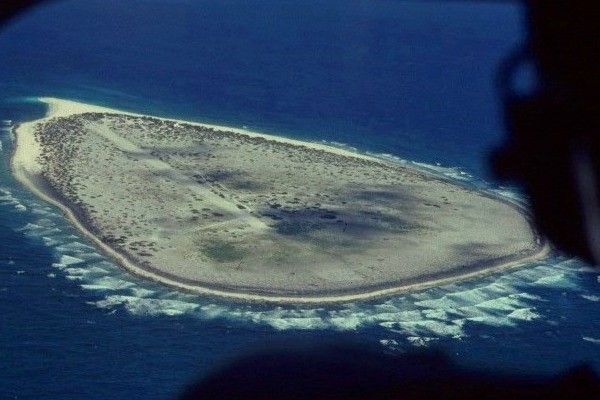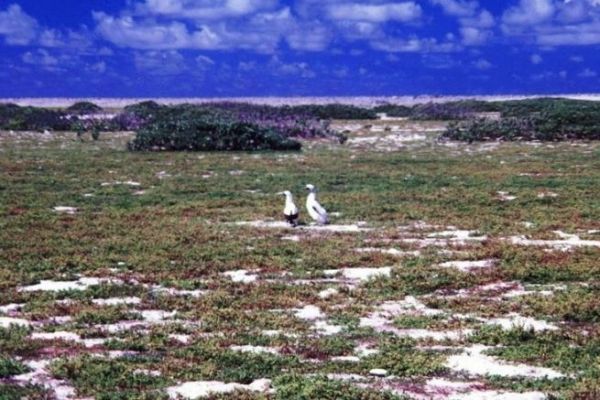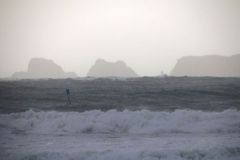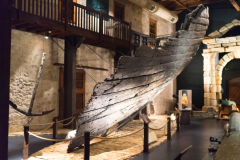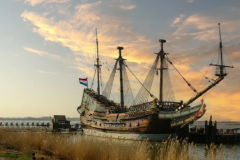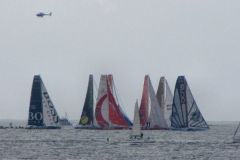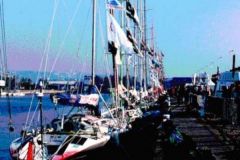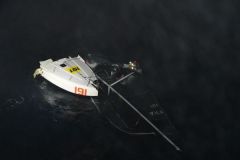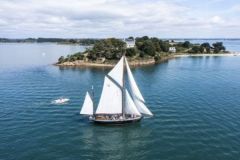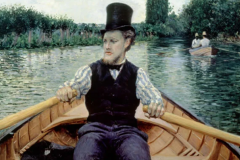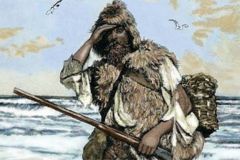On July 31, 1761, L'Utile, a slave ship belonging to the French East India Company, sank on the coral reefs of Île de Sable, a tiny atoll lost in the Indian Ocean. Among the survivors were sixty Malagasy slaves and one hundred and twenty-two French crewmen. Together, they managed to build a makeshift boat from the wreckage. The French then left the island, abandoning the Malagasy to their fate, with the promise that a ship would soon come to rescue them. An unfulfilled promise.
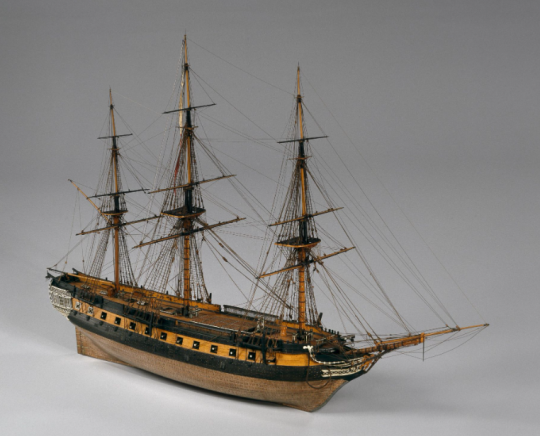
An unusual shipping route
In 1760, L'Utile, a 136-foot-long flute, was armed in Bayonne by the Compagnie des Indes. It took her 147 days, or around 5 months, to reach Port-Louis on the Isle of France, now Mauritius, where she brought the necessary raw materials. She was then sent to Madagascar to pick up supplies, but was forbidden to buy slaves, as there were fears of food shortages on the Isle of France. At the time, the slave trade was outlawed in the Indian Ocean, but the captain, Jean de Lafargue, was indifferent to the ban. He called at Foulpointe, a port in northeast Madagascar, and took on board 160 slaves whom he hoped to land discreetly on another island, Rodrigues. To do this, the captain takes an unusual and uncertain route.
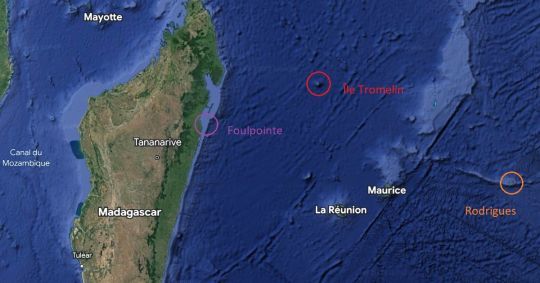
Terrible night-time shipwreck
On July 31, 1761, the ship hit a shoal and broke up during the night. René Estienne, former curator of the Marine archives in Lorient, has found a particularly interesting batch of correspondence: In it, Hilarion Dubuisson de Keraudic, ship's writer on L'Utile, describes the shipwreck and recounts part of the shipwrecked crew's stay on the island.
'' The sea took us across. The horrors of a violent and imminent demise caused by the most terrible waves, the most dreadful and repeated jolts, the biggest and sharpest rolls threw terror into almost everyone. We deliberated without resolving anything to put the boats overboard that our people had charged to sink low, definitely they remained on board. Finally, we decided to throw the mast overboard, and did just that. The mainmast was thrown to starboard, as was the mizzen mast and the foremast to port. This relieved the Vau, but the rolling and heeling continued, and the Vau was falling over to starboard (on the seaward side) to the point of shuddering. She suffered such violent heel strikes that the rudder bar blew the tillac off the chamber, despite its bars in several places; this determined M. de Castellan to go and cut it off himself. Without mast and rudder, prey to the breakers and the most terrible seas making a trunk [breaking] more than 5 feet above the highest point of the vessel, she was an hour longer without taking on water and without sharing, until about 2 hours after midnight. Mr. Castellan having well rounded her (?) from starboard to port and thrown and had thrown the starboard guns overboard; all this time the rungs were breaking under our feet and finally the deck fell in. The bow separated from the stern, the sides detached and the bottom left the tops. The boats crashed into the hold. We didn't know there was anything uncovered near us, believing we were on a shoal only, so everyone clung on as best they could to the debris, especially the stern being the most considerable, always covered by the sea which was making a trunk on us; we were waiting and counting on being at our last moment. Every second made us suffer a thousand deaths, and we could hardly breathe, such were the furious swells. That's how we were until daylight, a long and dreadful time! ''
Among the 143 crew members, some 20 sailors drowned. The slaves, for their part, were out of luck. As L'Utile was not designed for the slave trade, 160 of them were crammed into the hold when the ship sank, and the hatches were nailed shut for fear of an uprising. They only had the opportunity to escape when the ship broke up. Between 60 and 80 Malagasy drowned; the rest managed to make it ashore.
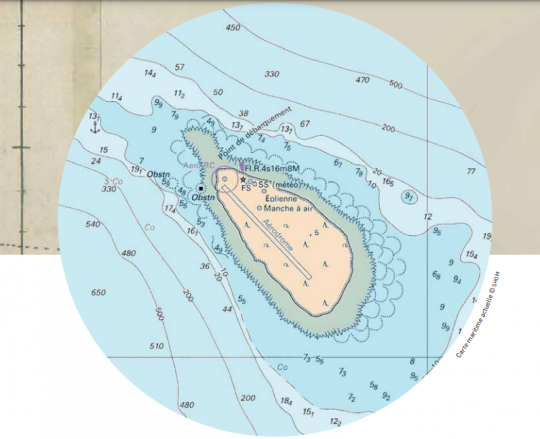
Survival takes shape
A hostile environment awaits the survivors: a barren wasteland, about 1 square kilometer in size, located between Madagascar and La Réunion, dotted with a few shrubs, with the highest point at just 8 meters above sea level. Temperatures fluctuate between 21° and 30°. The area is known as Ile de Sable.
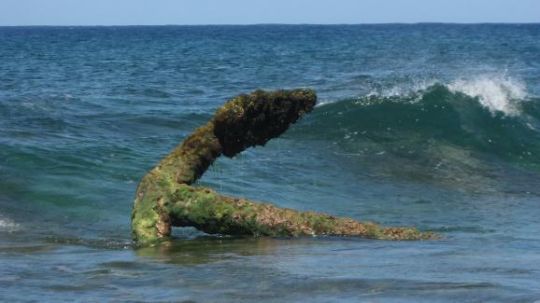
According to De Keraudic, from the day after the shipwreck, everyone set about salvaging whatever could be salvaged:
'' 22 barrels of flour
8 barrels of red wine
2 pieces of brandy
at least 12 sections of ditto
1 idem de cidre assez mauvais
1 small barrel of butter
Lots of tallow and fat from Loupes (?)
200L in several pieces of bacon and beef
1 barrel of oil, give or take.
Several bottles of ditto
Ditto for liqueurs.
We made a big tent with the big bonnet and bulwarks and put all the provisions in it, and put the crew in small tents. We were beginning to feel the need for water very strongly, as several blacks were dying with nothing to give them. ''
Water is the main problem, because without it, all the castaways are doomed to die. The first attempt to dig a well to find water ends in failure. However, there is a depression in the center of the island, where they discover brackish water at a depth of 5 meters. This source of water would provide sustenance for all those who tried to survive on the island.
A catamaran to leave the island
Construction soon began on a boat to escape from the island, while another was designed for fishing:
'' On the 4th and 5th, work continued on the debris and Mr. Castellan made a barge boat 32 ½ feet long by 12 wide at its large baud, flat below and has nothing at both ends, decked and 5 feet high.
9th: Ditto. In the afternoon, at two o'clock, we saw a two-masted boat to leeward of us. We hoisted several flags and burned two barrels of gunpowder, which I don't think they saw, but rather the Island, having tacked and set course for India.
Same on 30th and 31st. Saved a roll of lead, some rope and put a small catamaran out to sea (pieces of wood moored together on which one goes out to sea) carrying 3 men and we took 2 large sardines (fish). ''
In September, two months after the arrival of the castaways, Lieutenant Castellan ordered the French sailors to leave the island aboard the precious boat:
'' The 21st. Made a very large catamaran, presented and put the two masts on the boat.
22nd. Put water in the boat to see if the caulking was good.
The 23rd. Very heavy sea
The 26th. Beautiful sea The boat was finished and a boarding grapple married with a wench was anchored to haul the large catamaran out to sea. Blessed the boat and named La Providence, anchored afternoon at jet anchor by 18 fathoms coral bottom and broken shell, about two and a half strong cables from Leeward Island.
27th. Launched the boat with a lot of work, and at 5 p.m. all 122 of us got on board. Packed like sardines, we set sail. ''
The crew managed to return to Foulpointe on October 1. As a man of his word, Castellan had promised to return for the unfortunate Madagascans. The Compagnie des Indes did not share this intention. Despite Castellan's repeated requests over the following years to send relief supplies to the island and check whether there were any survivors, the governor steadfastly refused. In his writings, De Keraudic underlines the shame of having abandoned these poor men and women to their fate.

 /
/ 

